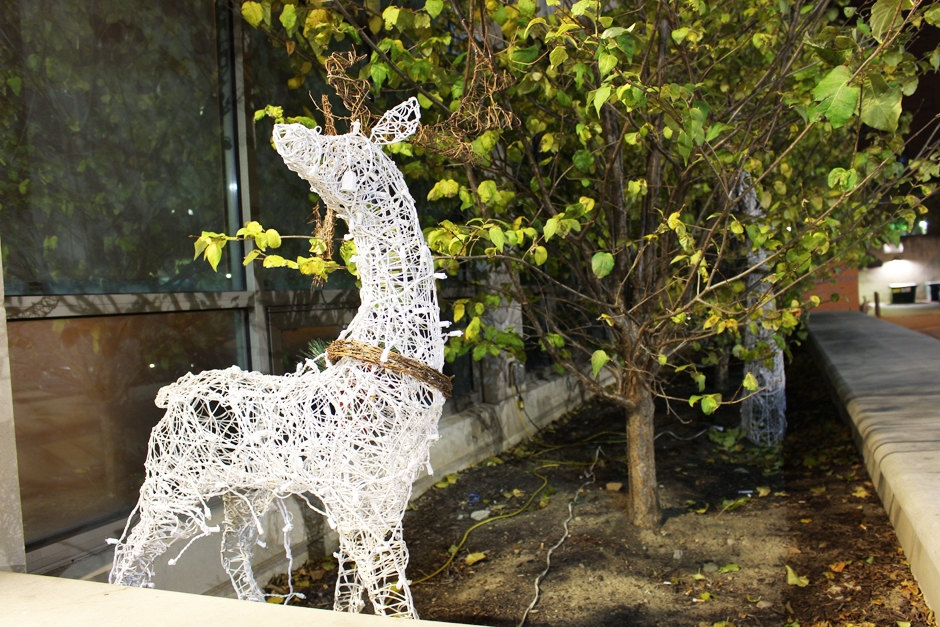
by Zoe Stratos | opinions editor
After all of the holiday gift-giving and New Year’s fireworks come to an end, people around the world find themselves in a heap of stuff and a resolution to fulfill.
Resolutions were never my thing; I could never commit myself to going to the gym everyday or eating healthier. This year, I wanted to take it day-by-day, starting with a resolution to clean out — especially after receiving so many new things for Christmas.
A couple of arguments and a few hours later, my sister and I had piles of old clothing dating back to nearly 2017, and off to Plato’s Closet we went. The agreement was to get some cash back for the more expensive items, and the rest would be given to Goodwill as a donation.
While waiting for the employees at Plato’s to look through the heaps of clothing, we perused the racks — knowing full well we had enough at home to last us the next five or more years — and both ended up purchasing three items each. After returning a jacket to Dick’s Sporting Goods that didn’t quite fit, I ended up purchasing two more clothing items at the mall. So much for the clean out.
My sister and I, and many other Americans, fall victim to one of the biggest issues in our nation: overconsumption. The holidays are no exception, but rather a large contributor to the issue.
According to Stanford University, Americans throw away 25% more trash during the Thanksgiving to New Year’s holiday period than any other time of year. This amounts to 25 million tons of garbage, or approximately 1 million extra tons per week, including wrapping paper, plastic, cardboard boxes, food waste and more.
The drastic increase in waste is a derivative of the overconsumption problem in the country, as many not only buy gifts during the holiday season, but also buy mass amounts of packaging and food products over the course of the three months — without reusing, recycling or even donating, though these methods are not an excuse for prior overconsumption.
One of the biggest contributors to the issue is the development of fast fashion, an economical phenomenon that has taken over the global fashion chain by creating cheap, trendy clothing at breakneck speed to meet consumer demands.
The variety goes up, the prices go down but the durability is less than desirable — but it doesn’t matter, there’s new $5 tops to buy and wear twice before tossing.
According to a 2021 study done by Earth.org, over the course of the 2000s, clothing sales doubled from 100 to 200 billion units a year, while the number of times an item was worn decreased by 36% overall.
Even with those continuing to recycle clothing, there is an estimated $500 billion in garment wastage each year, whether it comes from the consumer side or the retail side tossing unsold stock.
Stopping the fast fashion trend is just one way to help our planet and economy, as well as create an equitable holiday. In 2021, according to the National Retail Federation, the average American was spending roughly $998 on gifts, food and decorations.
As for gifts, look toward small businesses, or even purchase from resale stores. Instead of looking to Shein or Zara, take a stop at the local Goodwill or Salvation Army for both cheap and durable clothing — plus, it’s recycled. This Christmas, my sister purchased almost strictly from resale stores, making personalized sacks of clothing for her friends and me.
Another option during the holiday season is to use recycled materials for packaging and wrapping. Keep delivered products in their original boxes, and save them for future holiday seasons. That goes for ribbon, too. Instead of continually buying loads of wrapping paper, use old newspaper comics or buy recycled wrapping paper.
In these ways during the holidays — and so many more throughout the rest of the year — we can reduce unsustainable wastage on our planet, while finding creative new uses for old things. Instead of merely ‘cleaning out’ after the holidays, keep the resolution to make the world a better place.




